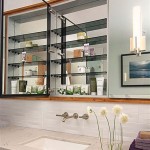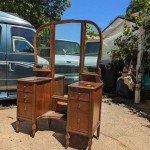A History of Sunburst Mirrors
The sunburst mirror, a decorative piece designed to evoke the radiant splendor of the sun, boasts a rich and multifaceted history. Its origins can be traced back centuries, evolving through various stylistic interpretations and cultural significances across different eras and geographical locations.
Ancient civilizations held a deep reverence for the sun, recognizing its life-giving power and associating it with deities and royalty. This veneration manifested in artistic expressions, including early precursors to the sunburst mirror. Archaeological evidence suggests the use of reflective materials like polished obsidian and bronze in ancient Egypt and Mesopotamia, fashioned into disc shapes and adorned with radiating embellishments. These objects, while not strictly mirrors in the modern sense, served symbolic and decorative purposes, capturing and reflecting light, much like their later counterparts.
The development of glassmaking techniques marked a significant turning point in the evolution of mirrors. During the Roman Empire, the invention of blown glass allowed for the creation of larger and more intricate glass surfaces. While examples of Roman sunburst mirrors are scarce, the prevalence of sun imagery in Roman art and architecture suggests the possibility of their existence, particularly in opulent homes and temples. Furthermore, Roman metalworking skills continued the tradition of crafting metal sunburst forms, often incorporating precious metals and gemstones.
The Renaissance witnessed a resurgence of interest in classical art and design, inspiring a renewed fascination with sunburst motifs. Italian artisans, renowned for their glassmaking prowess, began producing elaborate mirrors featuring gilded frames with radiating spokes, echoing the sun's rays. These mirrors served not only as functional objects but also as symbols of wealth and status, adorning the palaces and villas of the aristocracy.
The Baroque and Rococo periods, characterized by their ornate and extravagant aesthetics, further propelled the popularity of sunburst mirrors. The elaborate gilding, intricate carvings, and incorporation of crystals and other precious materials reached new heights of opulence. Sunburst mirrors of this era often served as focal points in grand interiors, reflecting candlelight and amplifying the sense of drama and theatricality.
The 18th and 19th centuries saw the spread of sunburst mirror designs across Europe. French artisans, particularly during the reign of Louis XIV, embraced the sunburst motif, incorporating it into the lavish decor of Versailles and other royal residences. The French style, known for its elegance and refinement, influenced mirror design throughout Europe, contributing to the widespread adoption of the sunburst form.
The Art Deco movement of the early 20th century offered a fresh interpretation of the sunburst mirror. Characterized by geometric shapes and streamlined designs, Art Deco mirrors often featured stylized sunbursts with clean lines and abstract forms. Materials like chrome, mirrored glass, and Bakelite were incorporated, reflecting the modern aesthetic of the era.
The mid-20th century, particularly the 1950s and 1960s, saw a resurgence of interest in sunburst mirrors, fueled by the popularity of Hollywood Regency and mid-century modern design. These mirrors often featured simpler, more streamlined sunburst patterns, with materials like brass, wrought iron, and bamboo becoming increasingly common. The affordability of mass-produced mirrors during this period made them accessible to a wider audience, contributing to their prevalence in homes and commercial spaces.
The latter half of the 20th century and the early 21st century have witnessed continued interest in sunburst mirrors, with designers and artisans exploring diverse interpretations of the classic form. Vintage and antique sunburst mirrors remain highly sought after by collectors, while contemporary designers continue to reinvent the motif, incorporating new materials and techniques to create fresh and innovative designs. From minimalist interpretations to elaborate and ornate creations, the sunburst mirror continues to hold a prominent place in interior design, reflecting its enduring appeal and timeless elegance.
The enduring popularity of the sunburst mirror can be attributed to its versatility and symbolic resonance. Its ability to reflect light and create a sense of spaciousness makes it a practical and aesthetically pleasing addition to any interior. Furthermore, the sunburst motif, with its inherent association with light, warmth, and positive energy, continues to evoke a sense of optimism and vitality, making it a timeless and enduring decorative element.
The history of the sunburst mirror is a testament to the enduring power of symbolic design and the evolving relationship between artistic expression and cultural values. From its ancient origins as a symbol of solar worship to its contemporary iterations in modern interiors, the sunburst mirror continues to capture the imagination, reflecting both the history of design and the enduring human fascination with the celestial.

A Short History Of The Sunburst Mirror

History Of The Sunburst Mirror Talie Jane Interiors

Sunburst Mirrors What They Are Where Came From And Why We Love Them

A Short History Of The Sunburst Mirror

Sunburst Mirrors The Antiques Diva

Sunburst Mirrors What They Are Where Came From And Why We Love Them

Sunburst Mirrors Are The Omnipresent Home Decor I Can T Stop Noticing Vox
My Faux French Cau Pair Of Vintage Spanish Sunburst Mirrors

Sunburst Mirrors What They Are Where Came From And Why We Love Them

Timeless Or Trendy Sunburst Mirrors Centsational Style








